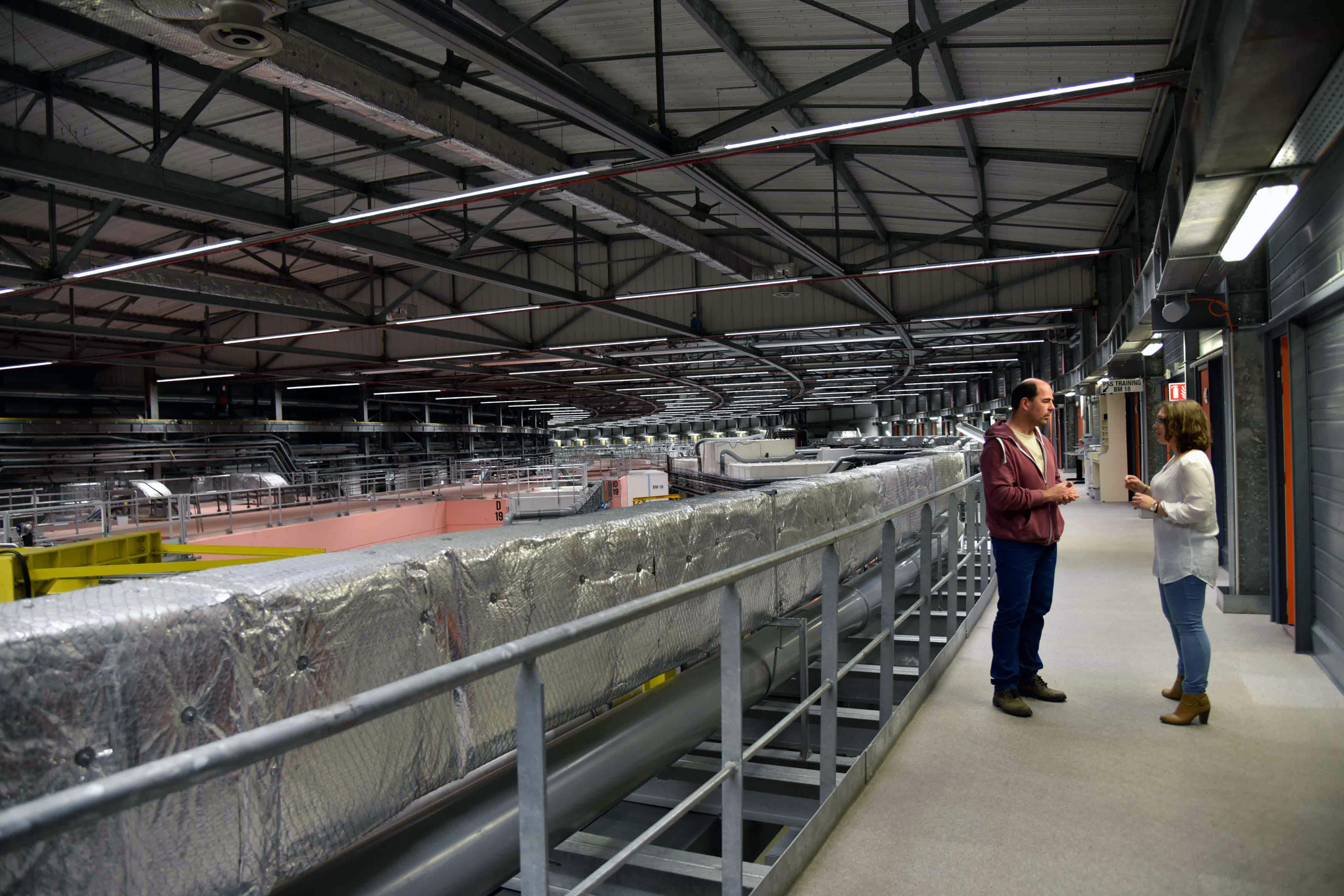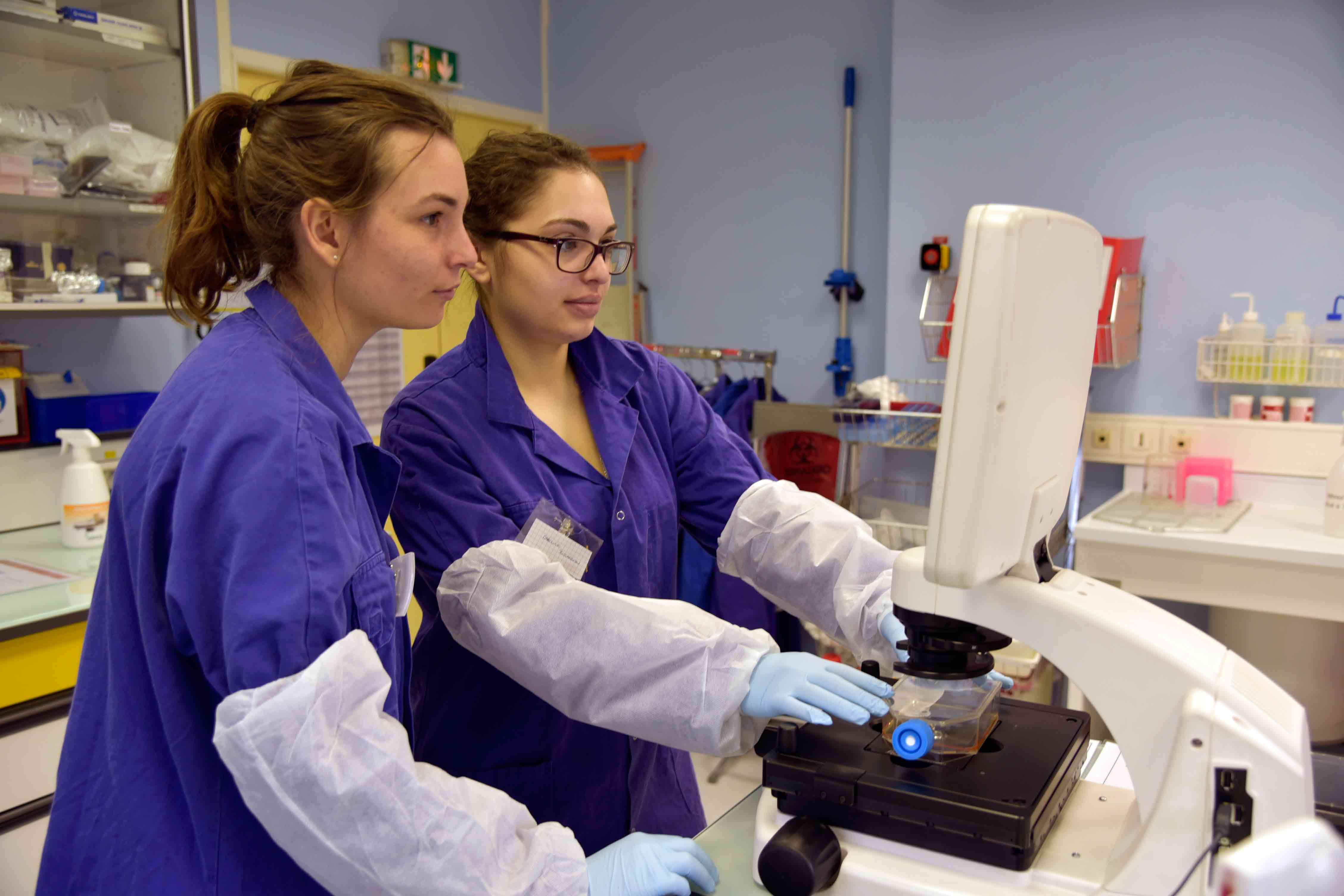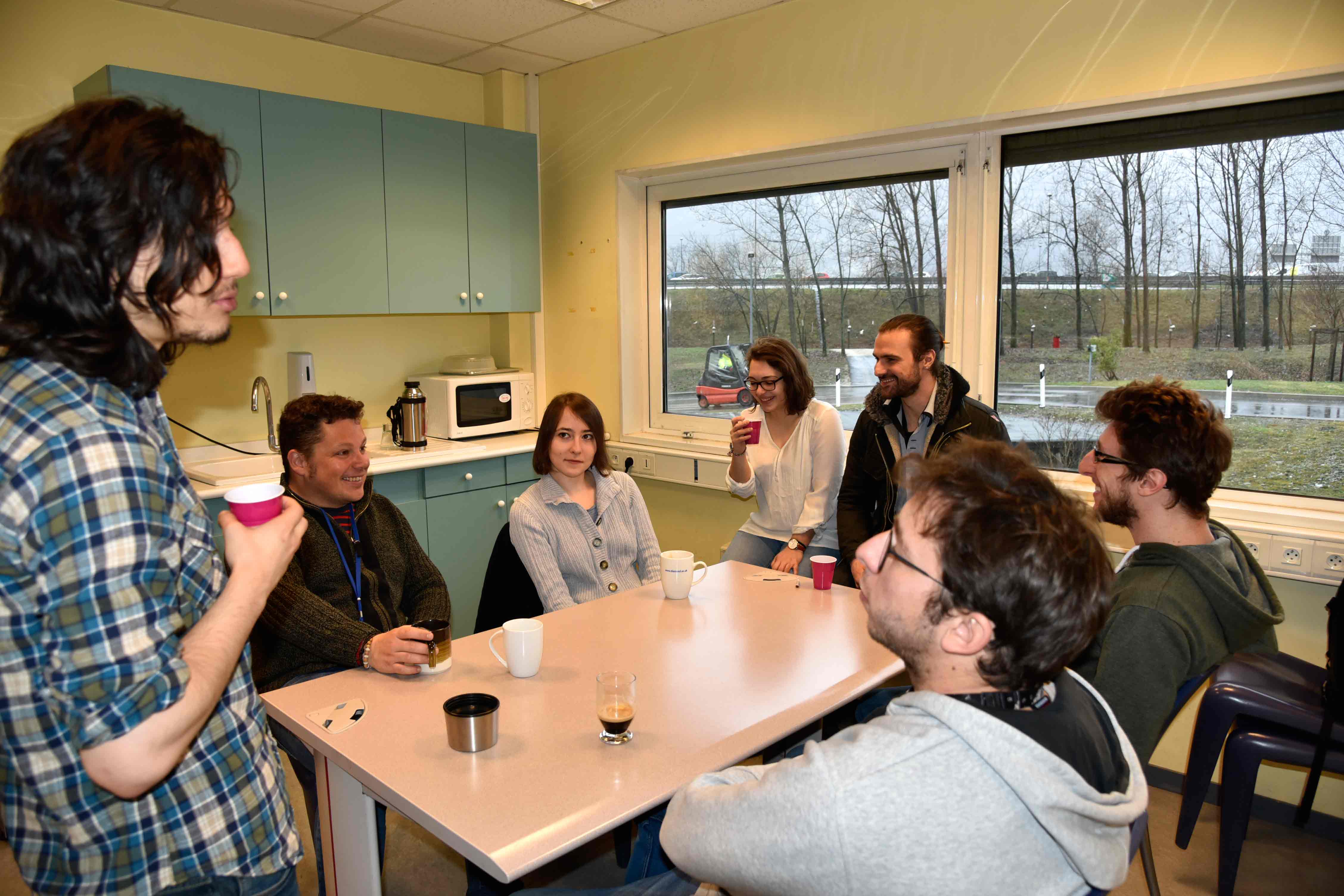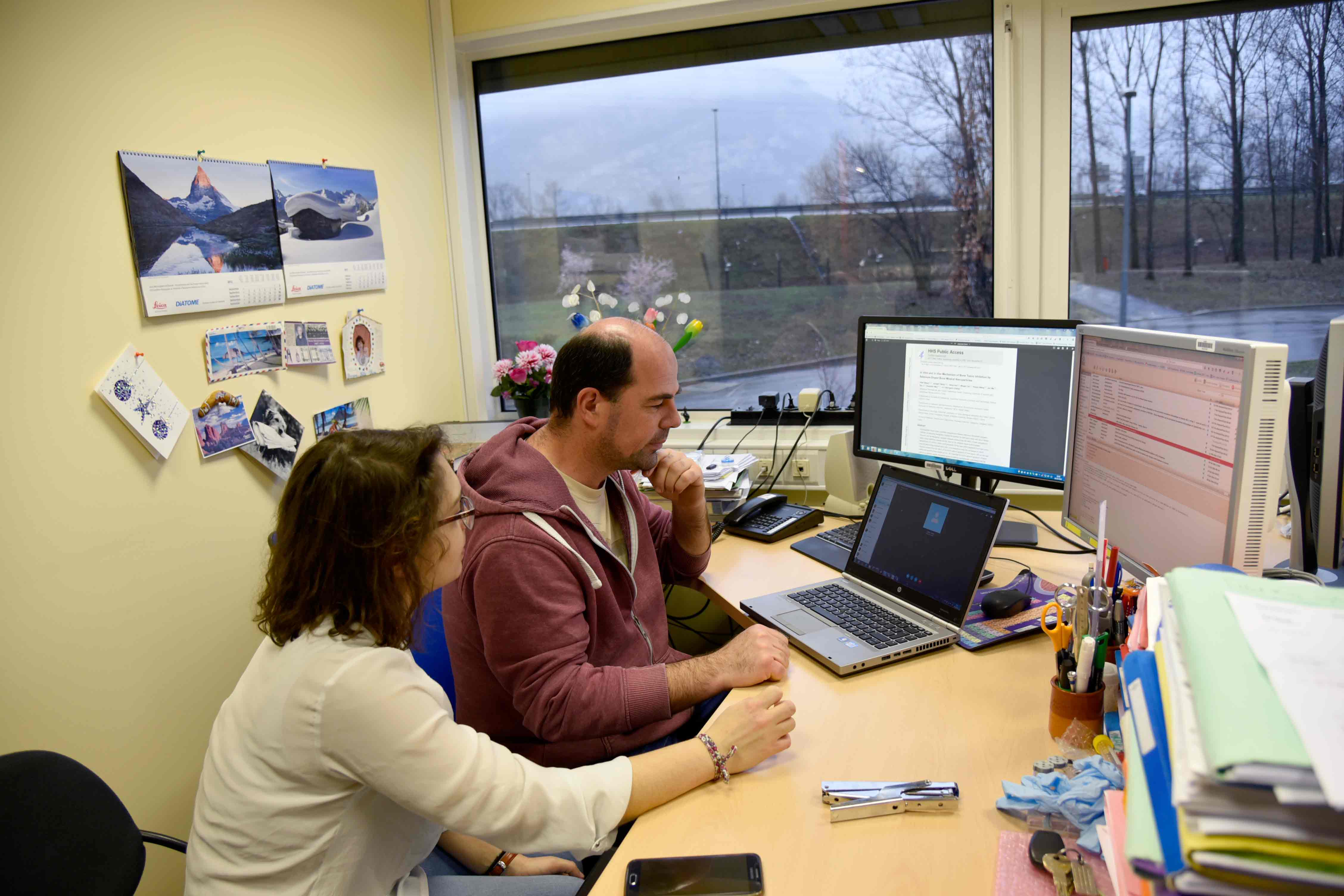- Home
- News
- General News
- A day in the life:...
A day in the life: The eclectic post-doc who explored unknown territories
11-03-2017
Ever wondered what an ESRF scientist’s or engineer’s life looks like? Are they all day working on their next Eureka moment or do they spend long hours in front of the computer? Do they have a sense of fulfilment? And does being a woman make any difference? The International Women’s Day is celebrated this week, so we have followed four women on their day-to-day routine to give a flavour of their lives.
Morning
Her desk is still looking bare. After all, she only started her post-doctoral contract two months ago. She is hired by the Institut national de la santé et de la recherche médicale (INSERM), but based at the ESRF. A couple of group pictures of former colleagues from her PhD hang on the wall. This morning, she is glued to her computer, ordering nanoparticles from a US provider. “They manufacture them much quicker than we would do because they are specialised in it, so we also consider to buy dedicated forms of nanoparticles”, she says.
Nanoparticles are at the core of Caroline Bissardon’s research. Her brand new post-doctoral position will give her the opportunity to explore the role of selenium nanoparticles to dampen the metastatic potential of aggressive cancers. Several research studies have exposed that selenium, especially in its nanoparticle form, can be very interesting for cancer therapy. However, very little is known about the mechanism by which selenium nanoparticles exert their anti-metastatic activity. “Among others, synchrotron X-ray spectroscopic methods such as X-ray fluorescence nanoimaging and X-ray absorption spectroscopy, will help us to obtain detailed quantitative information on the intracellular distribution of Se-NPs and on their chemical form to unveil targeted intracellular compartmentalization and biotransformation of selenium nanoparticles in cancer cells. We'll try to do this in depth studies during the next two years”, explains Caroline.
 |
|
Caroline Bissardon (right) with Sylvain Bohic, her supervisor. |
Next on the cards for today is sending off the experiment proposal for the next round. Writing proposals is not a trivial task and it has taken a couple of days to finalise it with her boss, Sylvain Bohic, also based at the ESRF, and Inserm scientist at laboratory EA 7442 “Recherche Medicale et Rayonnement Synchrotron” from the University Grenoble Alpes. “Fingers crossed that we’ll get beamtime”, she says.
Midmorning
She heads to the lab on ID17, where a colleague, PhD student Solveig Reymond, is showing her the cell culture procedures. Caroline doesn’t mind having to learn new things, on the contrary, she graciously embraces any opportunity to do so. She says she is lucky to have been able to change direction several times (she studied astrophysics, then went on to do a masters in theoretical medical physics and then a PhD on medical geochemistry). She stresses, however, that “you need to seize the opportunities that allow you to find your way, where you want to be”. “I adapt very easily, I am really motivated to learn and I work hard”, she says.
 |
|
In the lab, with Solveig Reymond (left). |
Hard work is what led her to be one of the recipients of the L’Oréal UNESCO Women in Science awards, which recognise the work of 17 PhD students and 13 Post-docs in France as “Generation of young researchers”, out of 1032 of applicants. Caroline’s PhD, on the role of selenium in cartilage, was a brave one: hardly any papers, a marriage of two disciplines (geochemistry and medicine) very rarely combined and the risk of not finding enough results for a PhD. Despite the challenges, she pulled it off, and the award is the proof in the pudding. “My thesis will always be THE PROJECT, in capitals, that will keep me enthusiastic for many more years because there are still questions that remain unanswered”, she says.
The L’Oréal UNESCO Women in Science award has given Caroline and her work more visibility. She thinks that this kind of acknowledgment to women scientists is a necessity. “There is still the idea that women and science is a weird combination, and there is still a supremacy of men in science and we need to change that”. Part of the work she will do with L’Oreal UNESCO is to visit different secondary schools and demistify science careers. “The message is that students can do whatever they want, and that science is as valid an option as any other. I was not really enthusiastic over maths in secondary school: I was stressed and my teacher wasn’t very inspiring. Yet I was great at quantum mechanics later in uni, because I felt more liberated and chilled than in school. Also, during my masters one of my professors told me I wouldn’t succeed but I decide to pursue. You don’t need to excel in a subject in school to be outstanding later, you don’t need others telling you what you can or cannot do, just choose what you like and go for it”. She quotes Albert Schweitzer: “Success is not the key to happiness. Happiness is the key to success. If you love what you are doing, you will be successful”.
Lunch
She eats with her colleagues from the INSERM in a coffee room near her office. She thinks it is important to have a break for lunch, to chill out and strengthen relations within the team. She claims the fact she likes to exchange with colleagues also made her move from a more desk-bound job like a job in theoretical physics, to becoming an experimental researcher.
 |
Afternoon
She has a Skype teleconference with Laurent Charlet, her former thesis director, who works at the Institut de la Terre (ISTerre) in the Universite Grenoble Alpes. Caroline’s PhD has also been the starting point for the creation of the French Chapter of the International Medical Geology Association (IMGA, http://www.medicalgeology.org/), which is keeping Caroline and Laurent Charlet very busy. “We realised there is only an international association but not at a national level. We think it is important to try to create a French community to exchange views, expertise and techniques on subjects that are susceptible to be important in medicine and geology”, she says.
 |
|
Caroline Bissardon and Sylvain Bohic start a skype session with Laurent Charlet. |
Evening
When Caroline leaves the ESRF, she religiously goes to the gym every other day, then heads home: an appartment shared with two other flatmates. She likes to spend time in the kitchen concocting her own recipes before reading. On her bedside table, a combination of books: from the classics like Balzac, to the new journalism of Capote or science-related works. Eclectic, just like her.
Text and photos by Montserrat Capellas Espuny



